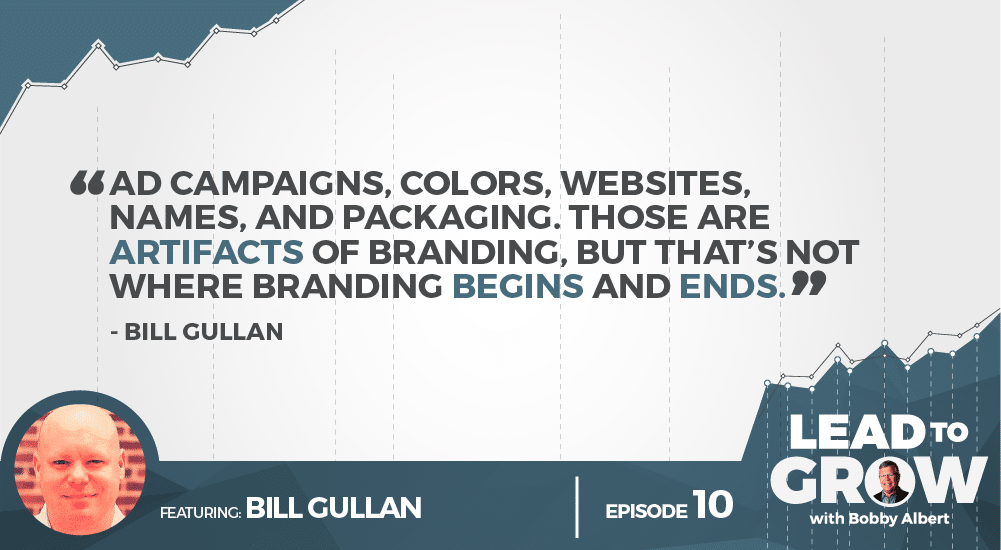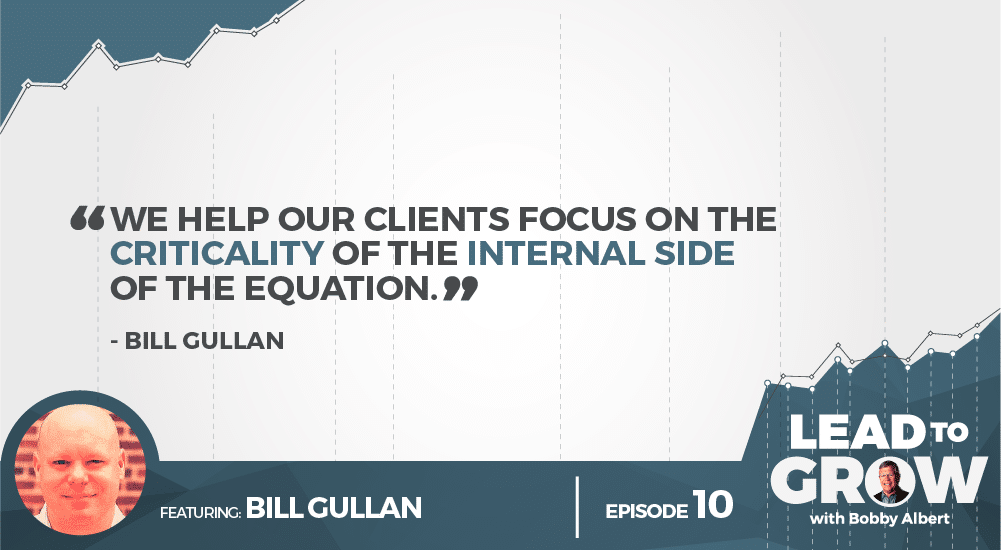Looking to Brand or Rebrand Your Company? Start With Values

Most of us know the tremendous impact branding can have on an organization. When most of us hear "branding," we think colors, websites, logos, and names.
But Bill Gullan says that's not where branding starts.
Bill's the president of Finch Brands, where they help clients brand and rebrand every day.
Bill says that branding starts well before you name a company or polish a website. It starts internally, with the values driven by your culture.
On this episode of the Lead to Grow podcast, Bill lays out his specialized plan of why branding is really an inside-out approach. He also gives listeners an inside peek into The Finch Way -- Finch's own values-driven approach to business.
Branding Starts Internally With Values
Bill cut right to the chase.
He doesn't believe branding starts on the outside with the external qualities of an organization.
"When someone refers to branding, people typically think of ad campaigns, colors, websites, names, or packaging. Those are artifacts of branding, but that's not where branding begins and ends," said Bill.
Branding starts deeper, with a company's intrinsic values. As employees share these values and build a culture, they translate and shine those values out into the real world.
Finch says branding is how an organization defines and expresses its differences.
Externally, many observe this expression as colors, websites, logos, and naming, but internally, branding has at least as many implications: It creates a common environment that encourages people to work together, giving them the motivation to bring their best everyday. This attitude translates directly to the outside world.
The Criticality of the Internal Side
When Finch helps a client rebrand, these are the existential questions the company is often facing:
- What is our message?
- What does our website look like?
- What's our tagline?
But Bill and his team dig deeper. "We help our clients focus on the criticality of the internal side of the equation."
Finch has three specific pieces to their process:
1. Crowdsource Values From the Entire Team
Finch helps clients build mission, vision, and values content by crowdsourcing values from the entire team.
They integrate a larger group within the workforce beyond just management. This strategy not only strengthens the ultimate values components, but the mere act of inclusion itself creates pre-enrollment and authorship in the final products.
This may seem time-consuming, but there are efficient ways to accomplish this. First, they set a specified time limit, and they also use breakout sessions and surveys to speed up the process.
2. Reinforce Values With Tools and Education
Finch believes in reinforcement. They deliver tools and education to clients that allow them to reinforce and re-align around their values. Brandbooks, for instance, are an excellent way to spread the core values of an organization.
"We seek to create this whole suite of artifacts that are current and relevant for team members to check-in on values and content."
3. Integration of Core Values Into HR Policies
The third piece of Finch's rebranding strategy includes integration of the company values into HR policies. Specifically, Finch educates HR on:
- Leading with values when it comes to talent acquisition
- Evaluating candidates against those values
- Making brand education central to onboarding and employee recognition and rewards
Meet the Five Values That Make Up the "Finch Way"
To see how this branding works in action, we can go straight to the source. Finch used these techniques on their own organization to discover their own identity.
They talked to the entire company (which is roughly 20 employees) to uncover their core values. Of course, there are hundreds of expectations employers have for an employee, but the goal of this process is to identify a core group of behaviors the organization wishes to elevate.
Since Finch is a company based on teaching other companies about values-driven branding, they know they have to win internally, so they can win in the real world.
Here's what they came up with:
- Create positive energy
- Care deeply about outcomes
- Find opportunity in the uncomfortable
- Be a driver not a passenger
- Have each other's backs
Use Action-Oriented Values
Go back to the Finch Way.
Notice something about all of their values? They're each actions.
Instead of saying "we value positive energy," they use "create positive energy."
This subtlety drives the culture to continually act and seek out the values, behaviors, and branding the company wishes to spread.
If You Were Having Lunch With Someone, What Would You Want Them to Walk Away Knowing About You?
I love asking each of our guests the above question. Bill said he'd want them to walk away knowing about his "personal logo." (It's an exercise they do with their clients -- they have each person draw their own personal logo.)
Bill's personal logo is an exclamation point with a smiley face underneath.
He said he delivers the most value and feels the most activated when he is highly energetic, and also enjoying everything with a sense of humor.
I'd say that personal logo is about right.
This blog post was taken from a podcast interview with Bill Gullan, president of Finch Brands.
Click here to hear this full episode. If you don't use iTunes, you can also find the full list of episodes by clicking this link.












